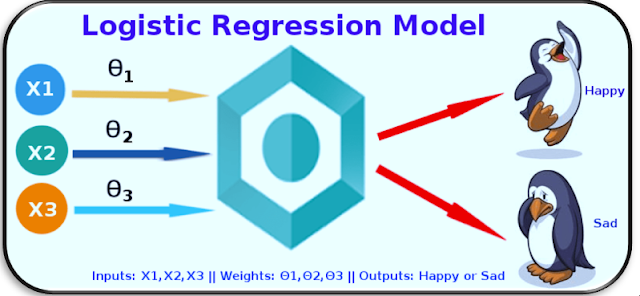Logistic regression is a powerful and widely used statistical technique in the field of data science and machine learning. It's particularly essential for solving binary classification problems where the goal is to predict one of two possible outcomes, such as "yes" or "no," "spam" or "not spam," and "positive" or "negative." In this blog post, we will dive into logistic regression, explain why it's called "logistic," and provide practical examples to illustrate its use.
What Is Logistic Regression?
At its core, logistic regression models the probability of an event occurring. It uses the logistic function (also known as the sigmoid function) to ensure that the predicted probabilities fall within the range of 0 to 1. The logistic regression equation looks like this:
P(Y=1|X) = σ(β₀ + β₁X₁ + β₂X₂ + ... + β_nX_n)
P(Y=1|X) represents the probability of the event happening given the input features X.
β₀, β₁, β₂, ..., β_n are coefficients to be determined.
X₁, X₂, ..., X_n are the input features.
Why "Logistic" Regression?
The term "logistic" in logistic regression refers to the logistic function (σ), which is an S-shaped curve. This curve allows us to transform a linear combination of input features and coefficients into probabilities. It ensures that the output is bounded between 0 and 1.
Practical Example: Predicting Student Exam Pass/Fail
Let's illustrate logistic regression with a real-world example. Suppose you want to predict whether a student will pass an exam based on the number of hours they studied. You gather data and build a logistic regression model. Here's the equation:
P(Pass=1|Hours_studied) = σ(β₀ + β₁*Hours_studied)
If the predicted probability is above a certain threshold (e.g., 0.5), you classify the student as "pass."
If the probability is below the threshold, you classify the student as "fail."
This model can be a valuable tool for educators and institutions to identify students who may need additional support.
Conclusion
Logistic regression is a vital tool in the data scientist's toolkit. It's a technique that shines in binary classification tasks and can be adapted for more complex scenarios. Understanding the fundamentals and mechanics behind logistic regression is essential for making informed decisions in various domains.


.jpg)
0 Comments